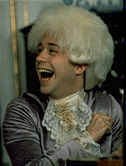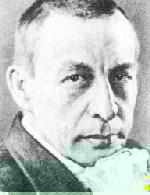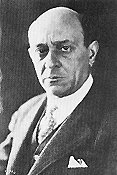![[S]](s2_title.gif) Department of
Music
Department of
MusicStanford University
![[S]](s2_title.gif) Department of
Music
Department of
Music | |
 |  |
Lectures Monday, Wednesday and Friday, 9:00-9:50am, Campbell
Recital Hall
Section Tuesday/Thursday, 9:00-9:50am
Instructor Stephen Hinton
Braun
Music Center, 214
shinton@leland
Office Hour: Monday, 10:00-12:00
Teaching Assistants
Kara
Gardner, Braun 201, kgardner@leland
Susan
Harvey, Braun 201, Tel. 824-3920
In tackling these issues, the course will trace the history of the symphony, using as examples some of the best-known compositions by major composers. The aim is to enhance musical enjoyment through historical and analytical explanation. An interest in careful listening is the primary requirement for the course. Supplementary readings are contained in the Course Reader, available from the Stanford Bookstore. Tapes of the set pieces, along with scores, are on reserve in Meyer Library, although students are encouraged to acquire their own copies of recordings for repeated listenings at their leisure.
Apart from taking the Mid-Term and End-Quarter Examinations, participants are required to produce one essay (topic to be announced). The essay should be approx. 1,000 words, and is due on March 8.
| January 10 | Introduction |
| January 12 | Beethoven,
Symphony No. 9 in d minor, op. 125 |
| January 17 | Stamitz, Symphony in E flat major, op.
11/3 |
| January 19 | C.P.E. Bach, Symphony in D major (Wq.
183/1) |
| January 22 | J.C. Bach, Symphony in B flat major, op.
18/2 |
| January 24 | Haydn, Symphony No. 104 in D major
("London") |
| January 26 | /cont... |
| January 29 | Mozart, Symphony No. 40 in g minor, K.
550 |
| January 31 | /cont... |
| February 2 | Beethoven,
Symphony No. 5 in c minor, op. 67 |
| February 5 | Schubert,
Symphony No. 8 in b minor, D. 759 ("Unfinished") |
| February 7 | Mid-Term Examination |
| February 9 | Schumann,
Symphony No. 3 in E major, op. 97 ("Rhenish") |
| February 12 | /cont... |
| February 14 | Berlioz,
Symphonie fantastique, op. 14 |
| February 16 | /cont... |
| February 21 | Liszt, Eine
Faust-Sinfonie |
| February 23 | /cont... |
| February 26 | Brahms, Symphony No. 2 in D major, op.
73 |
| February 28 | /cont... |
| March 1 | Tchaikovsky,
Symphony No. 6 in b minor, op. 74 ("Pathétique") |
| March 4 | /cont... |
| March 6 | Rachmaninoff, Symphony No. 2 in e minor, op.
27 |
| March 8 | /cont... [Essay due] |
| March 11 | Schoenberg, Kammersymphonie, op.
9 |
| March 13 | Webern, Symphony, op. 21 |
| March 15 | No class |
| March 18 | End-Quarter
Examination |
Further Reading
Robert Layton (ed.), A Guide to the Symphony, Oxford, 21995
Michael Steinberg, The Symphony: A Listener's Guide, Oxford, 1995
Donald Francis Tovey, Essays in Musical Analysis: Symphonies and Other Orchestral Works, Oxford, 1935; rep. 1989